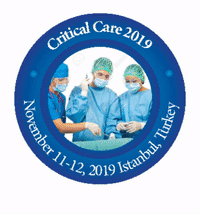Muhammad Alvi
Newcastle University Teaching Hospital, UK
Title: Aproaches to the anterior skull base
Biography
Biography: Muhammad Alvi
Abstract
Neoplasms of the skull base represent a signifi cant challenge for surgical management. Th ey are rare and include a variety of histological subtypes. By defi nition these tumors exist at the interface between the intra and extra-cranial space and therefore are adjacent to critical structures. Skull base surgery is a recent entity. Th e fi rst description of a craniofacial approach in the literature dates from Ketcham, et al. 1963 describing a combined transfacial approach. Th e principles of this initial strategy have undergone modifi cations over the years to minimize morbidity and brain handling whilst achieving disease free-margins. Th e goal remains en-bloc resection. Th e open approach to resection of these neoplasms remains the goldstandard. Improvements in neuroimaging, microvascular reconstructive options and surgical techniques have established Craniofacial Surgery (CFS) as a safe and eff ective treatment. Approaches to the skull base include a subcranial approach and a frontal/transfacial approach. A multidisciplinary should include a neurosurgeon and an otolaryngologist due to the extra and intra-cranial considerations when exposing the skull base. Th e choice of approach depends on the location of the tumor as well as expertise and experience of the surgeon. Aesthetic considerations on the patient’s part will also play a role. Th is review will begin with a brief consideration of the diff erent tumors of this region, including common routes of spread for these tumor subtypes. Th is will be followed by a discussion of clinical fi ndings and imaging modalities. Finally there will be a description of the diff erent surgical approaches used for treatment.

